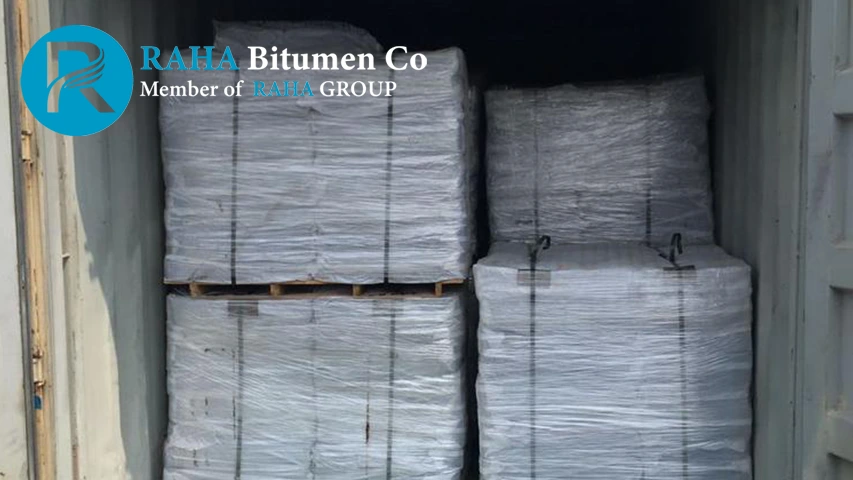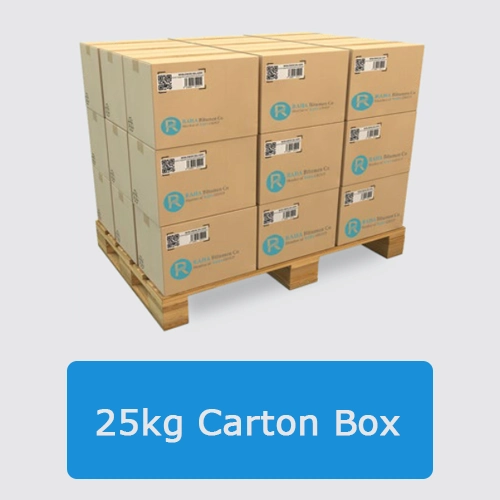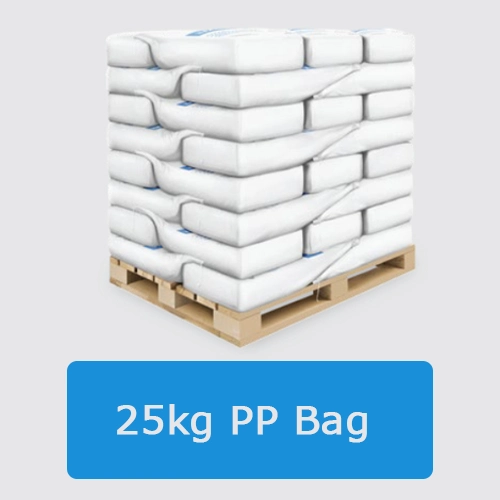
Oxidized bitumen 85/40, also known as blown or air-blown bitumen, is a modified bitumen produced by blowing air at elevated temperatures. Its viscosity and softening point increase, making it suitable for various applications. It is commonly used in construction, waterproofing, and flooring industries due to its excellent waterproofing and adhesive properties. It is also used in hydropower projects, roofing, flooring, oil and gas, and electrical industries. Other applications include bonding BITUMEN, hot-applied waterproofing layers, carpet tile manufacturing, and bituminous paint production.
Description of Oxidized Bitumen 85/40
Oxidized bitumen 85/40 also known as blown or air-blown bitumen or blown asphalt, is a type of bitumen modified by blowing air through it at elevated temperatures. This process increases its viscosity and softening point, making it suitable for various applications.
Oxidized Bitumen (Blown Asphalt) is produced by either a continuous or Staggered Blowing Process. Heated Penetration Grade Bitumen under a controlled environment is blown with air which controls the oil content in the bitumen while it oxidizes.
The different oxidized bitumen grades for suited applications produced are designated by two numbers to indicate the mid-points of their softening point and penetration ranges.
Produced oxidized bitumen (Blown asphalt) is commonly used in the construction and waterproofing industry due to its excellent waterproofing and adhesive properties.
Application of oxidized Bitumen 85/40
Oxidized bitumen 85/40 has a wide variety of applications, some of which include the construction of roads and hydropower projects, as well as roofing, flooring, mastics, the oil and gas industry, and electrical applications.
- Roads: Blown Bitumen 85/40 can be used for constructing new roads, paving existing roads, and performing road maintenance. It is possible to incorporate it as an additive into asphalt, which can then be used for paving roads, highways, railroads, and parking lots.
- Hydro projects call for the utilization of Blown bitumen 85/40 as the material for the canal lining. This specific type of bitumen can be utilized in a variety of additional hydro projects, including the construction of embankments and dams, hydraulic structures, the protection of dam linings, and the stabilization of sand.
- Roofing: Oxidised Bitumen 85/40 is utilized in the production of roofing felts, shingle roofs, damp-proof coating compositions, carriage roofing compounds, liquid roof coatings, and plastic cements. Additionally, it is utilized in carriage roofing compounds. It is frequently the most effective method for waterproofing roofs.
- Flooring: The installation of flooring is one of the most common applications for blown asphalt 85/40. It is possible to use bitumen mastic that is resistant to acid and alkali to prevent corrosion on the surfaces of facilities such as chemical plants, fertilizer plants, steel factories, and other types of facilities. It is also possible for it to repair parquet flooring.
- In the oil and gas industry, Oxidized Bitumen 85/40 is frequently used as an additional layer of corrosion and rust protection for pipelines.
- Bitumen 85/40 is utilized in the electrical industry as a laminated board adhesive. This adhesive is utilized in the electrical industry. It is capable of securing the lids of electrical connection boxes. In addition to wires and lithium-ion batteries, it is utilized in the cable manufacturing industry.
Other using:
- As a bonding BITUMEN for roofing sheet membranes.
- As a hot-applied waterproofing layer
- Carpet tile manufacture
- As a raw material for liquid BITUMEN coatings
- For the production of bituminous paints
- mastic
- rust proof for pipe coatings
- Primers
- Basement
- roofing productions and felts
- Bridge Joints
- Sound dampening felts
- Electric cable joint protection
- Marine Mastic
Oxidized bitumen 85/40 Quality
Bitumen quality Over many years, Shell has investigated the relationship between laboratory-measured properties of penetration-grade bitumen and their performance in asphalts on the road. The ability to predict the long-term behavior of asphalts becomes more important as traffic loading has increased and performance requirements have become ever more demanding. Performance on the road depends on many factors, including the design, the nature of the application, and the quality of the individual components. In volumetric terms, oxidized bitumen 85/40 is a relatively minor component of asphalt, but it has a crucial role – acting both as a durable binder and conferring viscous-elastic properties on the asphalt. Essentially, satisfactory performance of bitumen on the road can be ensured if four properties are controlled: Rheology, Cohesion, Adhesion, and Durability.
Benefits of Oxidized Bitumen 85/40
- Balanced Strength: Ideal for tasks necessitating a perfect blend of rigidity and adaptability.
- Enduring Performance: Exhibits remarkable outdoor durability, effectively withstanding weathering.
- Consistent Performance: Enhanced thermal stability enables it to uphold properties under varying temperature conditions.
- Superior Adhesion: The adhesive potency of Oxidized Bitumen 85/40 amplifies its efficacy in numerous applications.
- Versatile Industrial Utilization: Suited for road construction and industrial coatings, owing to its adaptability.
Handling and Storage
The validity of Oxidized bitumen 85/40 is 10 years with multi-time heating and cooling.
Bitumen guarantees its Blown asphalt, oxidized bitumen 85/40 for the period of 10 years in the condition of multi-time heating and cooling situation.
The heating of packaged bitumen is a critical phase in most of the final uses. Typically, the packaged material is heated and melted in boilers out on site.
However, control at the heating phase is very important in terms of health and safety as well as in maintaining the quality of the product.
The note must be taken of the maximum safe handling temperature of 230 C and this should not be abused. Bitumen is a poor conductor of heat, consequently, control of the heating phase is of paramount importance.
The Oxidized Asphalt material should be broken up prior to placement in the boiler. This exposes a larger surface area to the heat and encourages a more even heating regime. Without the larger exposed surface area, aggressive heating at the base and sides of the boiler may well result in localized overheating, altering the characteristics of the modified bitumen and potentially causing thermal cracking of the bitumen, creating the release of low lash vapors. The flash point of the oxidized bitumen then becomes irrelevant; as these low flash vapors determine the fire risk.
Melted bitumen should not be left in the boiler and reheated from cold, as there is then a high potential for localized overheating around the heating area (lack of convection means poor heat transfer) and potential development of a pressurized pocket of low flash vapors.
Be aware of the placement of any temperature monitoring or control devices. As a result of the poor thermal conductivity of the bitumen, a thermometer in the bitumen some distance from the heat source could read significantly different (even hundreds of degrees) from the true temperature of the bitumen near the heat source.
Packing of Oxidized Bitumen 85/40
Oxidized bitumen 85/40 is available in various packing, including Kraft bags, melt able plastic bags, drums, as well as bulk Oxidized bitumen 150/5which is formed by hot air blasting until the desired specifications are achieved. Depending on the grade and penetration range, the oxidized bitumen 85/40 can be provided in any grade.
Optimum strength desi millimeter grade 85/40 is produced in compliance with ASTM standards and meets the following specifications..
Major of Oxidized Bitumen Packings
25kg Carton Box- Palletized and Shrink
Wrapped:
- Loading 880 Carton Box in 20ft Contai-
ner= 22 Ton Net

25kg PP Bag- Palletized and Shrink
Wrapped:
- Loading 920 Bag in 20ft Container= 23
Ton Net

Popular Oxidized Bitumen 85/40 packing for Africa and East Asia
the popular packing of Oxidized Bitumen 85/40 is PP Bag for Most ports of East Asia and Africa.
Specification
| BITUMEN 85/40 | TEST METHOD | UNIT | SPECIFICATION |
|---|---|---|---|
| Specific gravity @ 25/25 °c | ASTM D70 | Kg/cm³ | 1.05 approx |
| Penetration @ 25°c | ASTM D5 | mm/10 | 35-40 |
| Softening point °c | ASTM D36 | °C | 80-90 |
| Ductility @ 25°c | ASTM D113 | cm | 3 min |
| Loss on heating(wt) % | ASTM D6 | wt % | 0.2 max |
| Flashpoint °c | ASTM D92 | °C | 260 min |
| Solubility is CS2(wt) % | ASTM D4 | wt % | 99 max |
| Spot test | A.a.s.h.o.t102 | – | Negative |


